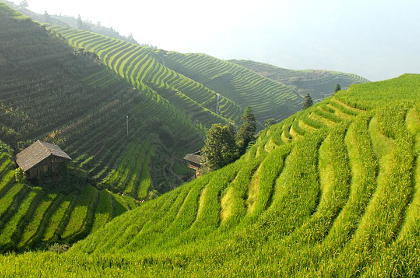
Millions Spent, No One Served: Who Is to Blame for the Failure of GMO Golden Rice?
The recent Nobel laureates’ letter accusing Greenpeace of a “crime against humanity” for opposing genetically modified (GMO) golden rice reveals a deep division not only between civil societies and some science circles but also within the science community – a division in the visions for our common future and which path to take for our joint development. A division we see growing and escalating.
October 10, 2016 | Source: Independent Science News | by Angelika Hilbeck and Hans Herren
The recent Nobel laureates’ letter accusing Greenpeace of a “crime against humanity” for opposing genetically modified (GMO) golden rice reveals a deep division not only between civil societies and some science circles but also within the science community – a division in the visions for our common future and which path to take for our joint development. A division we see growing and escalating. A strong indication of this division is that among the Nobel laureate signatories, there seems to be hardly anybody with a solid scientific track record in agriculture, food production, development, or the socio-ecological and political causes of poverty and hunger. Others with notable competence – at least in the economic and social domains of development, poverty, and hunger – are not among the signatories. Signs of escalation also include the emotional, accusing language in the letter and the ample use of scientifically unsubstantiated claims. What is missing in the letter and among the supporters and developers of GMOs is the recognition and scientific analysis of some tough facts.
Fact no. 1: Still no functioning vitamin A rice despite unlimited resources
No functioning vitamin A rice has been produced in over 20 years of research. This is despite full support at every level: financial, institutional, political, and corporate. By ‘functioning’, we mean farmer’s rice varieties that reliably and stably express sufficient amounts of beta-carotene (pro-vitamin A, the precursor of Vitamin A) over many generations of seed saving. These seeds must continuously express beta-carotene at a level that has been documented to be efficiently convertible to Vitamin A in mammals and, most importantly, can (statistically) significantly relieve the symptoms of Vitamin A deficiency in hungry people. None of this is scientifically trivial but that’s what has been promised.
The first golden rice, GR1, was unsuccessful and is long gone. Golden rice 2 (GR2) is a patented pro-vitamin A GM rice developed from scratch by the multinational biotech firm Syngenta and still in the field trial stage at the International Rice Research Institute (IRRI) at least one decade after it’s creation.
The vast majority of scientists in the world will never see such comprehensively generous support for their research – yet they still deliver, and must deliver if they ever want to renew funding for their research. This is more than can be said for the golden rice project.
Fact no. 2: Lack of recognition of real reasons for failure to deliver
A quick evidence check is sufficient to reveal the simple reason why golden rice is not in farmer’s fields: it is still not ready because it is not performing agronomically. Furthermore, it is far from being medically documented to relieve symptoms of Vitamin A deficiency. Neither Greenpeace nor the destruction of a test plot in the Philippines by local activists can be held responsible for this lack of scientific achievement.
